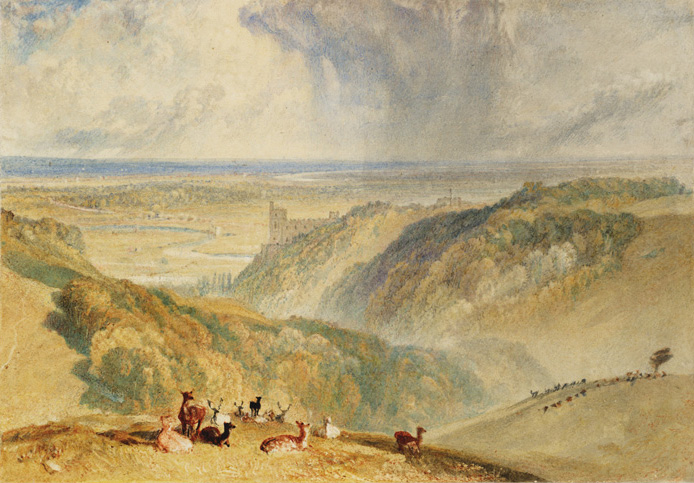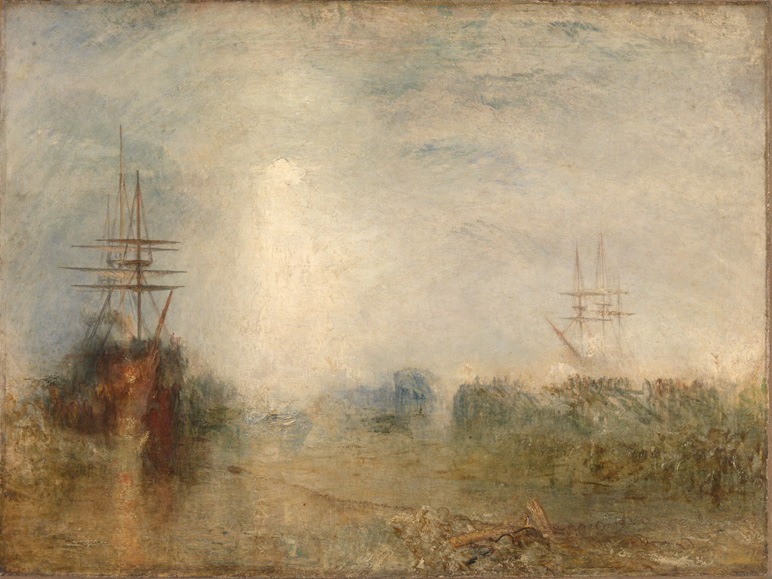
Artists love watercolors; museums—while no less enthusiastic—are a bit wary of them. For all the lovely and luminous qualities of the medium, watercolors are fragile artworks that are particularly sensitive to light, heat, humidity, and other variations in ambient conditions. Given that, loans of watercolors between museums are rarely made, the chances of damage being much too high.
In that context, the Mystic Seaport Museum’s current show of ninety-two watercolors, along with four oils and a sketchbook, by Joseph Mallord William Turner, on loan from the Tate Britain in London, is rather a spectacular curatorial coup, especially for a relatively small cultural institution. The works in the exhibition cover the breadth of the artist’s career—the earliest is a view of a mountain gorge from 1791, when Turner was a teenager; the latest, is an oil on canvas exhibited fifty-five years later at the Royal Academy in 1846. All the works are part of the famed Turner Bequest—the trove of some three hundred oil paintings and roughly thirty thousand watercolors, studies, and sketches that Turner willed to the British nation on his death.

The Mystic Seaport Museum bills itself as the pre-eminent maritime museum in the United States. (As it receives most of its visitors in summer, one reason the Connecticut museum is displaying the Turners from October to February is to point out that it is a year-round venue.) Not surprisingly, a large parcel of the works in the show are seascapes—among them coastal views, beach scenes, and shipwrecks—including that oil exhibited in 1846, which has the evocative title Whalers (Boiling Blubber) Entangled in Flaw Ice, Endeavouring to Extricate Themselves. The Mystic Seaport Museum is the only North American stop for this exhibition.
J. M. W. Turner: Watercolors from Tate • Mystic Seaport Museum, Connecticut • to February 23, 2020 • mysticseaport.org
